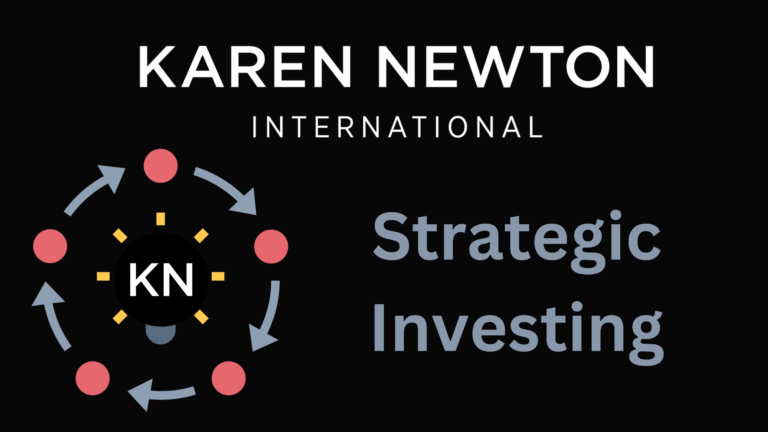Understanding Stock Market Basics
Investing in the share market can seem intimidating at first, but once you understand the basics, it opens up opportunities to build wealth over time. Whether you’re looking to grow your savings, create passive income, or work toward financial independence, the stock market is a powerful tool.
Table of Contents
- Introduction to the Share Market
- Key Terminology
- Different Ways to Invest in Shares
- How to Start Investing in the Share Market
- Fundamental vs. Technical Analysis
- Risks and How to Manage Them
- Investment Strategies for Beginners
- Common Mistakes to Avoid
- Tools and Resources for Beginners
- Next Steps for Beginners
- Taking Your First Step
Introduction to the Share Market
The share market is where companies offer a portion of their business to individual investors by issuing shares. These shares represent partial ownership in a company. The share market is a place for buying and selling these shares.
The share market works by connecting companies seeking funds with investors who want to invest their money. Companies that need to grow or expand offer shares to raise capital. In turn, investors have the opportunity to own a part of these companies and potentially earn returns.
Companies sell shares to boost their capital without incurring debt. This allows them to access funds from a wider range of investors. Individual investors can buy shares directly from companies undergoing an initial public offering or purchase already issued shares through various platforms.
People invest in shares for different reasons. Some look for long-term growth while others aim for regular income through dividends. The share market provides multiple avenues to reach financial goals, making it a valuable tool for personal finance planning.
Over time, the share market has evolved into a highly organized arena where technology and global communication have played important roles. Today, access to market information and trading platforms is easier than ever, allowing even beginners to get involved with relative ease. This evolution has made the market more accessible and dynamic.
Key Terminology
Understanding the language of the stock market is really important before jumping into investments. I have found that clarifying key terms helps in understanding market movements and making informed investment decisions.
Shares vs. Stocks vs. Equities: These terms are often used interchangeably. Shares represent the ownership of a company. Stocks may refer both to shares and other forms of securities. Equities describe an ownership interest in a company.
Bull Market vs. Bear Market: A bull market indicates rising stock prices and an optimistic investor outlook. A bear market means falling prices and a more pessimistic market sentiment. Recognizing these trends can help in making informed decisions.
Dividends: Dividends are payments that a company gives to its shareholders from its profits. For many investors, dividends provide a source of regular income that can be reinvested or used as supplemental funds.
Market Capitalization: This is the total value of a company’s outstanding shares. It is calculated by multiplying the share price by the number of shares available. Market capitalization offers an overview of a company’s size and market position.
P/E Ratio (Price-to-Earnings): The P/E ratio represents a company’s current share price relative to its per-share earnings. A lower P/E ratio might indicate that a stock is undervalued, while a higher ratio may suggest that the stock is overvalued. It is always important to consider context when evaluating these figures.
IPO (Initial Public Offering): This marks the first time a company offers its shares to the public. IPOs can provide exciting opportunities to invest in companies that are in an early stage of growth, offering high potential for those willing to take the risk.
Blue-chip Stocks vs. Penny Stocks: Blue-chip stocks belong to large, established companies and typically offer steady returns with lower risk. Penny stocks, on the other hand, are low-priced securities that often come with higher risks. Each type of stock comes with its own risk profile and potential rewards.
ETFs and Mutual Funds: Exchange-traded funds (ETFs) and mutual funds allow investors to purchase a diversified portfolio of stocks with just one investment. ETFs trade on stock exchanges similarly to individual shares, while mutual funds are managed over longer periods. This all-in-one approach helps investors spread risk while potentially enjoying returns from multiple sectors.
Different Ways to Invest in Shares
The share market offers multiple methods for investing. I have explored several approaches that are available for both beginners and seasoned investors.
Buying Individual Stocks: This method involves selecting specific companies that I believe will perform well in the future. It offers more control over my portfolio, but it also requires thorough research and a deep understanding of each company’s performance and market trends.
Investing Through ETFs and Index Funds: ETFs and index funds provide a built-in diversification benefit. Instead of picking individual companies, these funds include a basket of stocks which can cover entire sectors or track major indexes. This approach helps reduce the risks associated with the volatility of individual stocks.
Mutual Funds vs. Direct Stock Investing: Mutual funds are managed by professionals who select the stocks on your behalf. This option is ideal for investors who prefer a guided approach. Direct stock investing, however, requires that you personally make decisions about which stocks to buy or sell. Both methods have their trade-offs between control and the convenience of professional management.
Robo-Advisors and Managed Portfolios: Robo-advisors use algorithms to create and manage a diversified portfolio based on your risk tolerance and goals. They present a cost-effective way to tap into expert strategies without the need for extensive personal research. Many investors find this method attractive for its balance of technology and personalized service.
Each method of investing in shares has its own benefits and challenges. By studying each approach carefully, investors can choose the method that best fits their financial goals and comfort level with risk.
How to Start Investing in the Share Market
Starting my journey in stock market investing meant learning about the fundamental steps before putting money on the line. Planning is very important for making informed decisions that match your financial situation.
Start by setting clear investment goals. Whether you want long-term wealth, short-term gains, or a reliable income stream, goals drive the decision making. Determining how much risk you can tolerate plays a significant role in shaping a sound investment strategy.
Choosing a brokerage account is a critical step. Brokerage accounts provide your gateway to the stock market, with various platforms offering an assortment of tools and fee structures. Look for user-friendly platforms that come with low fees and robust research resources, making it easier to start small and build confidence over time.
Researching companies before investing has proven to be an invaluable practice. Reading financial statements, understanding industry positioning, and keeping an eye on market trends all contribute to forming informed investment choices. This deep investigation allows investors to spot potential pitfalls and promising opportunities early on.
Diversification is always key. Spreading investments across various sectors minimizes risk because losses in one area can be offset by gains in another. Add that combining both individual stocks with ETFs or mutual funds creates a balanced portfolio that not only survives market turbulence but can also thrive during growth spurts.
Additionally, make an effort to follow market news and economic indicators which provide real-time insights into potential changes and opportunities. This habit of constant learning and adjustment helps to refine your investment strategy over time.
Fundamental vs. Technical Analysis
Both fundamental and technical analysis are useful tools in making sense of the share market. Use both methods to guide investments, providing a multi-faceted perspective on market trends and individual stock performance.
Fundamental Analysis: This method focuses on a company’s financial health. Look at factors such as earnings, revenue, debt, and management quality to assess the value of a stock. Detailed reports, annual filings, and comparisons with industry peers all form part of the analysis. This approach helps to determine whether a stock is a sound long-term investment.
Technical Analysis: Technical analysis involves studying charts to identify patterns in stock price movement. Review trends, support and resistance levels, and trading volume to predict future stock movements. This method is particularly useful for timing entries and exits, helping to manage short-term volatility.
By combining both fundamental and technical analysis, creates a well-rounded view of each investment. While fundamental analysis helps to figure out a company’s intrinsic value, technical analysis shines a light on the market sentiment and trading dynamics that affect stock prices on a day-to-day basis.
This balanced strategy has enables the investor to make decisions that are rooted in both solid financial data and real-time market behavior, which in turn builds confidence in the decisions made.
Risks and How to Manage Them
Investing in the share market is not without its challenges. Understanding and managing the risks is very important to safeguard investments.
Market Fluctuations: The stock market naturally goes through periods of ups and downs. Recognizing that these fluctuations are intrinsic to the system helps set realistic expectations. Try to focus on long-term goals even during times of volatility and take profit where possible.
Economic Downturns: Larger economic issues, such as recessions or global incidents, can lead to market slumps. Being aware of how these external factors can influence the market providing different strategic investment opportunities.
Company Performance Risks: Sometimes, a company may perform poorly due to internal challenges or broader market pressures. Keeping track of company performance through regular research and critical analysis helps in identifying potential problems before they become severe.
Managing Risk with Diversification: Diversification is one of the most effective strategies to manage risk. By investing in different sectors and asset classes, a downturn in one area can often be balanced by gains in another. Incorporate stop-loss orders and periodic reviews to ensure your portfolio remains aligned with investment goals.
In addition to these strategies, focus on having a long-term perspective and a disciplined approach. This involves setting realistic expectations, avoiding impulsive decisions, and regularly revisit your investment plan as market conditions evolve.
Investment Strategies for Beginners
For many beginners, establishing a reliable and practical investment strategy is the foundation of successful investing. Experiment with several strategies that help smooth out the effects of market volatility until you find one that suits your investment style.
Buy and Hold Strategy: This approach involves purchasing stocks and holding onto them for an extended period, regardless of short-term market movements. The underlying belief is that solid companies will grow over time, making this a very important long-term strategy.
Dollar-Cost Averaging: With this technique, Invest a fixed amount of money at regular intervals. This method helps mitigate the risk of investing a large sum at one time and lessens the impact of market volatility. Regular investments can help smooth out the cost of acquisition and foster disciplined investing habits.
Growth Investing vs. Value Investing: Growth investing focuses on companies that show strong potential for future expansion even if their current stock prices may be high. In contrast, value investing involves searching for undervalued stocks that have strong fundamentals but may be overlooked by the market.
Dividend Investing for Passive Income: Some investors prefer stocks that pay regular dividends. This strategy not only aims for capital appreciation but also provides a steady income stream. Dividend payments can be reinvested to buy more shares or used as supplemental income, offering flexibility to suit different financial needs.
It is also very important to continually educate oneself and to consider a mix of these strategies. Over time, as market conditions change, investment approach adapts, reflecting lessons learned and new opportunities that arise. Taking a proactive stance by reviewing and adjusting your strategy has proven essential in navigating an ever-changing market landscape.
Common Mistakes to Avoid
Learning from mistakes is a pivotal part of the investing adventure. Reflect on common pitfalls to stay on track and improve your decision-making process.
Investing based only on market hype can lead to poor choices. Always make sure to conduct thorough research before making any decisions. Relying on rumors or fleeting trends usually results in losses, rather than fruitful gains.
Another frequent error is not conducting enough research. It is crucial to understand a company’s performance, leadership, and market position before investing. Strong research practices serve as the backbone for making well-informed decisions.
Panic selling is a natural reaction for many new investors when the market experiences dips. During these times, emotions can take over, leading to hasty decisions that might incur unnecessary losses. Stay calm and objectively reassess the situation can help avoid such errors.
Timing the market is often easier said than done. Attempting to buy at the lowest and sell at the highest point on every movement is challenging and can lead to missed opportunities. Following a consistent strategy is a more reliable method than trying to predict every market move.
Lastly, paying attention to fees and commissions is key. Ignoring these costs can slowly erode profits. By carefully comparing fee structures among different platforms, make sure to keep unnecessary expenses to a minimum.
Tools and Resources for Beginners
There are several tools and resources available that help me navigate the complexities of the share market. I have discovered a mix of online platforms, news sources, and educational materials that have given a boost to my understanding and confidence in investing.
News Sources: Staying updated with reliable news outlets like Bloomberg, CNBC, and various respected financial publications keeps you informed about market developments and global economic trends. This consistent flow of accurate information is very important in adjusting strategies as needed.
Investment Apps and Platforms: Many apps offer simulated trading, portfolio management, and in-depth research features. These digital platforms provide a convenient way to practice with virtual money before risking actual funds, bridging the learning curve for beginners and seasoned investors alike.
Books and Courses: Educational resources are invaluable to anyone looking to build a strong foundation in investing. Check some of the books and courses available through Karen Newton International.
Next Steps for Beginners
Engaging in activities like simulated trading helps newcomers learn without the stress of risking real money. These practice environments are a safe space to fine-tune strategies and learn from any mistakes without serious financial consequences.
Starting small and gradually building an investment portfolio allows you to get a feel for the market without overcommitting too early. Small investments in a variety of stocks or funds can help you understand your own risk tolerance and gradually build an experience-based strategy.
Keep an eye on investment trends and continuously seeking new knowledge. The market changes constantly, and being open to continuous learning helps in adapting strategies that work best under current conditions. Reading up on market analyses and studying expert opinions can offer reassurance about investment decisions.
Moreover, virtual trading platforms, sometimes known as paper trading, offer an environment where you can test out different strategies without any financial implications. I have found that these simulations, which closely mimic real market behavior, are invaluable for preparing the investor to handle actual market situations when they decide to invest real money.
Persistent effort and continuous education form the cornerstone of successful investing. Regularly checking reliable sources, following detailed financial analyses, and updating your approach as you gain more experience will help you build a robust portfolio. I encourage new investors to take it step by step, remain patient, and view each market fluctuation as an opportunity to learn and adapt.
Taking Your First Step
Choose a broker that offers a virtual trading platform and practice. The longer you practice the wealthier you will become when going live on the share market. Most importantly, monitor everything you do. Keep records of the decisions made.
The share market is a journey—by starting early and investing wisely, you can set yourself up for financial success.

Karen Newton is a Business and Wealth Strategist, 3x International Bestselling Author, and founder of Karen Newton International. She combines practical experience with AI-Powered Entrepreneurship to help smart entrepreneurs build online income, invest strategically, and create long-term wealth through business growth, investments and joint ventures.







